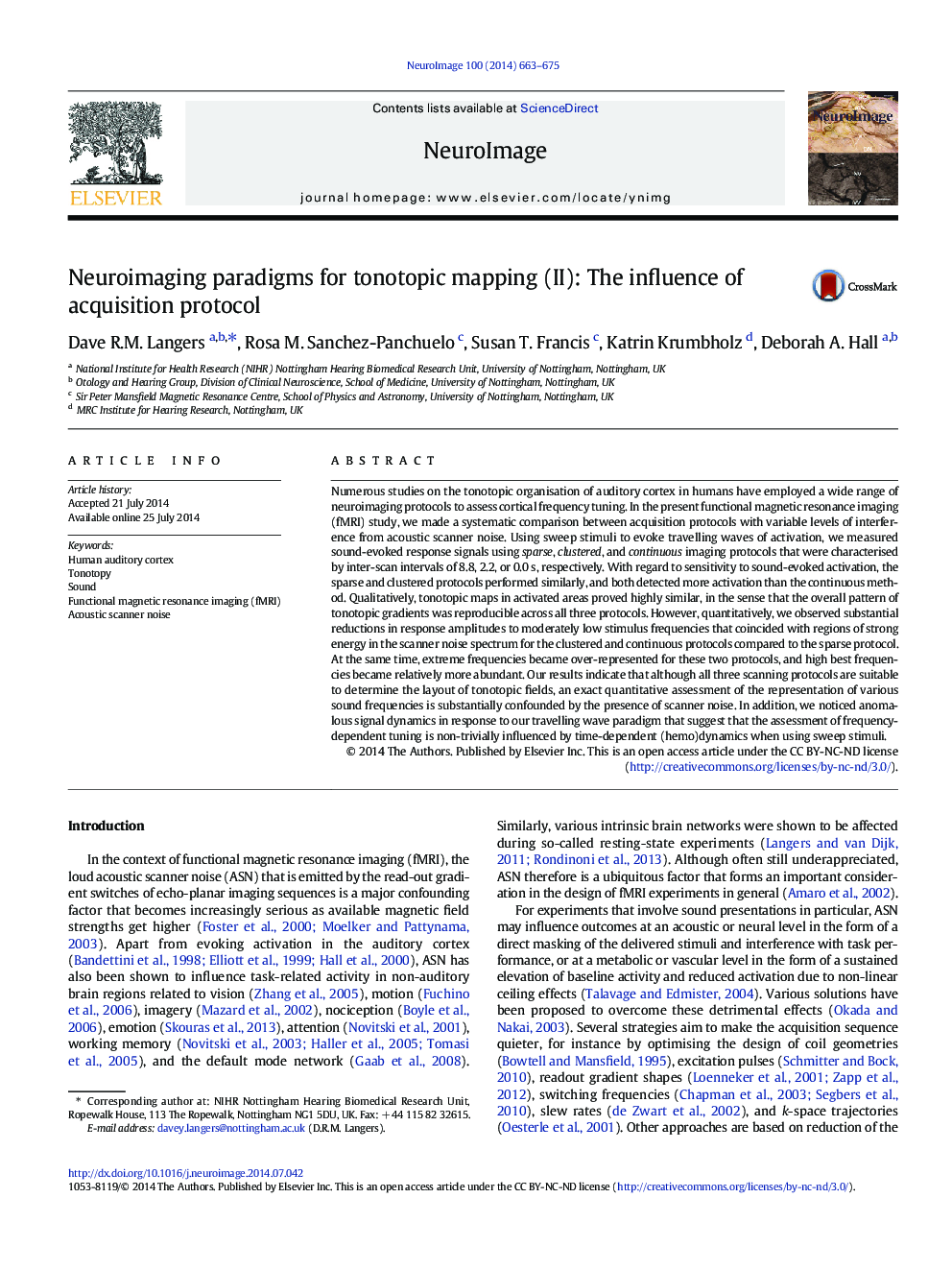| کد مقاله | کد نشریه | سال انتشار | مقاله انگلیسی | نسخه تمام متن |
|---|---|---|---|---|
| 6026807 | 1580906 | 2014 | 13 صفحه PDF | دانلود رایگان |
عنوان انگلیسی مقاله ISI
Neuroimaging paradigms for tonotopic mapping (II): The influence of acquisition protocol
دانلود مقاله + سفارش ترجمه
دانلود مقاله ISI انگلیسی
رایگان برای ایرانیان
کلمات کلیدی
موضوعات مرتبط
علوم زیستی و بیوفناوری
علم عصب شناسی
علوم اعصاب شناختی
پیش نمایش صفحه اول مقاله

چکیده انگلیسی
Numerous studies on the tonotopic organisation of auditory cortex in humans have employed a wide range of neuroimaging protocols to assess cortical frequency tuning. In the present functional magnetic resonance imaging (fMRI) study, we made a systematic comparison between acquisition protocols with variable levels of interference from acoustic scanner noise. Using sweep stimuli to evoke travelling waves of activation, we measured sound-evoked response signals using sparse, clustered, and continuous imaging protocols that were characterised by inter-scan intervals of 8.8, 2.2, or 0.0Â s, respectively. With regard to sensitivity to sound-evoked activation, the sparse and clustered protocols performed similarly, and both detected more activation than the continuous method. Qualitatively, tonotopic maps in activated areas proved highly similar, in the sense that the overall pattern of tonotopic gradients was reproducible across all three protocols. However, quantitatively, we observed substantial reductions in response amplitudes to moderately low stimulus frequencies that coincided with regions of strong energy in the scanner noise spectrum for the clustered and continuous protocols compared to the sparse protocol. At the same time, extreme frequencies became over-represented for these two protocols, and high best frequencies became relatively more abundant. Our results indicate that although all three scanning protocols are suitable to determine the layout of tonotopic fields, an exact quantitative assessment of the representation of various sound frequencies is substantially confounded by the presence of scanner noise. In addition, we noticed anomalous signal dynamics in response to our travelling wave paradigm that suggest that the assessment of frequency-dependent tuning is non-trivially influenced by time-dependent (hemo)dynamics when using sweep stimuli.
ناشر
Database: Elsevier - ScienceDirect (ساینس دایرکت)
Journal: NeuroImage - Volume 100, 15 October 2014, Pages 663-675
Journal: NeuroImage - Volume 100, 15 October 2014, Pages 663-675
نویسندگان
Dave R.M. Langers, Rosa M. Sanchez-Panchuelo, Susan T. Francis, Katrin Krumbholz, Deborah A. Hall,